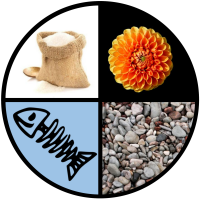Welcome to the repository for the Zooniverse cloud classification project
Attention: This repository still needs some cleaning up, so a few things might not work.
We highly recommend using Anaconda to manage your Python packages.
To start from scratch, create a new conda environment with the required packages by typing
conda create -n my-new-environment --file requirements.txt
python setup.py install
If you already have a conda environment and simply want to make sure you have all the necessary packages installed for this repository, do:
conda install --file requirements.txt
python setup.py install
To use the GPU with Keras which is strongly recommended if you want to train a neural network (see below), you have to replace keras with keras-gpu in the requirements.txt file. Unfortunately it doesn't always work right out of the box depending on your system.
If you only want to use the pretrained models, you can also do this on CPU.
If you want to modify the functions inside pyclouds you can do a development install by typing
python setup.py develop
We are using satellite images provided by NASA Worldview. Go to the image_download directory for further instructions.
Right now I am using two deep learning algorithms: 1) A Resnet for object detection and 2) a Unet version that uses the fastai library for image segmentation.
Pretrained network versions are available here: https://doi.org/10.5281/zenodo.2565146
An object detection algorithm draws bounding boxes around objects of interest. In that way it does exactly what the human labelers did.
Here, we are using keras-retinanet, an implementation of a modern detection network in Keras: https://github.com/fizyr/keras-retinanet
In addition to the packages in the requirements.txt file you will need to install the following:
pip install keras-resnet
git clone [email protected]:fizyr/keras-retinanet.git
cd keras-retinanet
python setup.py install
Then follow the instructions in the ml-retinanet notebook for training and inference.
WARNING: fastai requires Python 3.7. I used a different conda environment for the fastai experiments. Follow the instructions on the fastai documentation.
In image segmentation, every pixel is assigned one category. For this we first need to create "masks", i.e. an image for every classification that indicates with category each pixel belongs to. This happens in the create-segmentation-masks notebook.
Then we are using the fastai library to create a modern Unet version in ml-fastai-segmentation.
